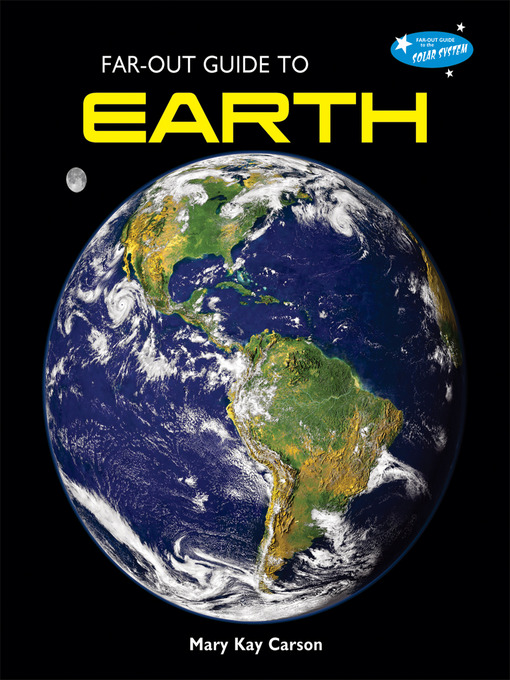Earth is the only planet in our solar system that is suitable for life. It has liquid water, oxygen, and enough gravity to hold its own atmosphere. But did you know that Earth is always changing? Scientists have used spacecraft and satellites to learn more about our planet. They can better predict natural disasters like hurricanes, and monitor volcano eruptions and climate changes. Learn lots of far-out facts about our home planet.
-
Creators
-
Publisher
-
Release date
December 21, 2012 -
Formats
-
OverDrive Read
- ISBN: 9781464501135
-
EPUB ebook
- ISBN: 9781464501135
- File size: 4570 KB
-
-
Languages
- English
-
Levels
- ATOS Level: 5.7
- Lexile® Measure: 910
- Interest Level: 4-8(MG)
- Text Difficulty: 4-5
-
Reviews
-
School Library Journal
December 1, 2010
Gr 4-6-Lively writing with specific facts systematically presented and plenty of dramatic space art and photography add up to a winning formula for these introductions to our planet and its solar neighborhood. Highlighting the satellites and space probes that have played such central roles in our exploration of the solar system, Carson offers a thrillingly alarmist view in Asteroids and Comets of the (relatively) small rocks and comets that hurtle through local space to, on occasion, collide spectacularly with Earth or other planets. In the second title, she explains how the Landsats and other satellites have led us to a better understanding of the inner and outer characteristics of Earth. The author then surveys our rapidly expanding knowledge of Jupiter and its teeming system of moons and describes our tentative first steps toward closer looks at the enigmatic Pluto and three other Pluto-like icy dwarfs beyond. Aside from misleadingly dense representations of the asteroid belt and of near-Earth objects in Asteroids, the illustrations are above average-a cogent and well-placed mix of astro-photos, processed images, speculative paintings, and portraits of space gear and scientists at work. Numerous sidebars, spreads of summary "Fast Facts" in each volume, and select lists of multimedia resources expand and support presentations that will appeal equally to casual readers and researchers.-John Peters, formerly at New York Public Library
Copyright 2010 School Library Journal, LLC Used with permission.
-
The Horn Book
January 1, 2011
These texts explore a range of topics about bodies in the solar system, covering both planetary science and the technology used to explore and gather data. The formats are a little crowded with main text, detailed captions for the many color photographs and diagrams, "Far-Out Fact" text boxes, and "Fast Facts" lists. There are six other fall 2010 titles in this series. Reading list, timeline, websites. Glos., ind.(Copyright 2011 by The Horn Book, Incorporated, Boston. All rights reserved.)
-
Formats
- OverDrive Read
- EPUB ebook
subjects
Languages
- English
Levels
- ATOS Level:5.7
- Lexile® Measure:910
- Interest Level:4-8(MG)
- Text Difficulty:4-5
Loading
Why is availability limited?
×Availability can change throughout the month based on the library's budget. You can still place a hold on the title, and your hold will be automatically filled as soon as the title is available again.
The Kindle Book format for this title is not supported on:
×Read-along ebook
×The OverDrive Read format of this ebook has professional narration that plays while you read in your browser. Learn more here.


